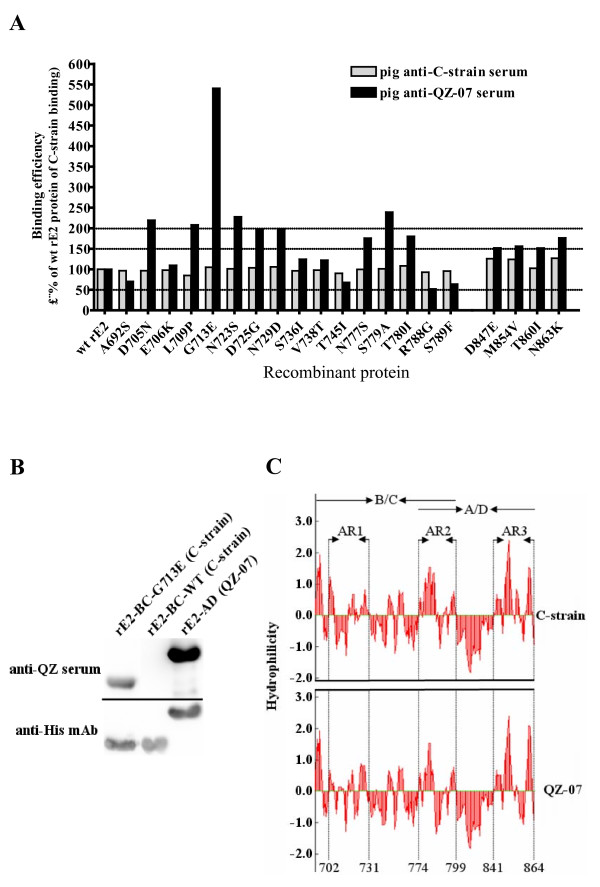Figure 5.
Identification of residues and regions involved in antigenic variation of glycoprotein E2. (A) Binding of the wild type (wt) and variant C-strain rE2 proteins to pig anti-C-strain or anti-QZ-07 sera. Site-directed mutagenesis was used to systematically substitute amino acids in C-strain E2 protein with those found at the same positions in subgroup 2.1 proteins. The substituted amino acids are depicted on the x axis. The y axis shows relative binding efficiency of individual rE2 proteins. For each of the variant C-strain rE2 proteins, the binding efficiency was determined by normalizing to anti-his-tag binding first, and then to the wt C-strain rE2 protein binding to pig anti-C-strain and anti-QZ-07 sera, respectively. Thus, the binding of the wt C-strain rE2 protein to either of the sera was set at 100%. rE2-BC proteins were used for A692S, D705N, E706K, L709P, G713E, N723S, D725G, N729D, S736I, V738T, T745I, N777S, S779A, T780I, R788G, and S789F substitutions because these residues are located in the antigenic unit B/C. rE2-AD proteins were used for D847E, M854V, T860I, and N863K substitutions since these residues are located in the antigenic unit A/D. The binding efficiency is relative to C-strain rE2-BC or rE2-AD binding to the reference serum depending on the kind of variant protein being compared. (B) Western blots of G713E variant rE2-BC protein using pig anti-QZ-07 serum and mouse monoclonal anti-His-tag antibody. The wt rE2-BC of C-strain and rE2-AD of strain QZ-07 are set as controls. (C) Hydrophilicity profile comparison of the antigenic units of E2 between the C-strain and strain QZ-07. The vertical axis represents the hydrophilicity scores.

